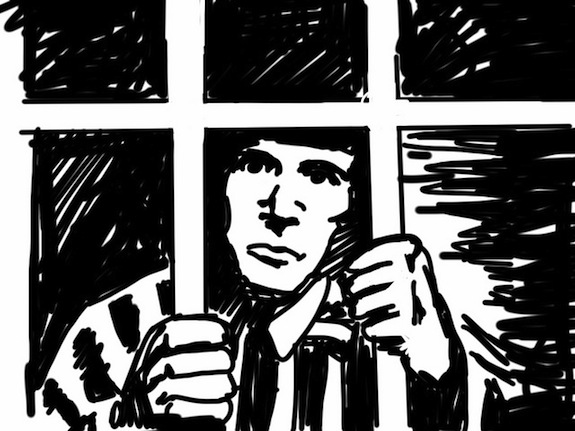What Happens When You Test the Prisoner’s Dilemma on Prisoners
The prisoner’s dilemma is a classic game theory thought experiment. But no one ever tested this on actual prisoners. Until now

Image: Giulia Forsythe
The Prisoner’s Dilemma is a classic thought experiment that pits two recently arrested people against one another. Each cares more about his personal wellbeing than his friend’s. The prosecutor offers the same deal to both prisoners: If one person confesses and the other doesn’t, the one who gave up the goods goes free and the silent one goes to jail. If they both confess, they both get convicted and go to jail for two years. If they both stay silent, they both only go to jail for one year.
The Stanford Dictionary of Philosophy explains the point of this experiment:
The “dilemma” faced by the prisoners here is that, whatever the other does, each is better off confessing than remaining silent. But the outcome obtained when both confess is worse for each than the outcome they would have obtained had both remained silent.
This is what makes the prisoner’s dilemma a classic way to explain game theory. Many might be familiar with the best outcome from the movie A Beautiful Mind. The game theory answer to this puzzle is that it’s always better to betray your partner. But no one ever tested this on actual prisoners. Until now. Business Insider explains:
Menusch Khadjavi and Andreas Lange put the famous game to the test for the first time ever, putting a group of prisoners in Lower Saxony’s primary women’s prison, as well as students through both simultaneous and sequential versions of the game.
The payoffs obviously weren’t years off sentences, but euros for students, and the equivalent value in coffee or cigarettes for prisoners.
It turns out that, unlike game theorists, prisoners don’t betray one another. In fact, they betray one another far less than college students do. The students only cooperated 37 percent of the time, while the prisoners stuck together 56 percent of the time.
Now, cigarettes and coffee aren’t the same as doing time. And the prisoner’s dilemma wasn’t really designed to predict specifically what prisoners would do, but rather to present a situation that puts participants in a difficult moral quandary. Back at the Stanford Dictionary of Philosophy, they break down tons of different ways the puzzle can be solved if everybody playing is a pure, rational person. But of course nobody actually is. Especially not students.
More from Smithsonian.com:
/https://tf-cmsv2-smithsonianmag-media.s3.amazonaws.com/accounts/headshot/Rose-Eveleth-240.jpg)
/https://tf-cmsv2-smithsonianmag-media.s3.amazonaws.com/accounts/headshot/Rose-Eveleth-240.jpg)